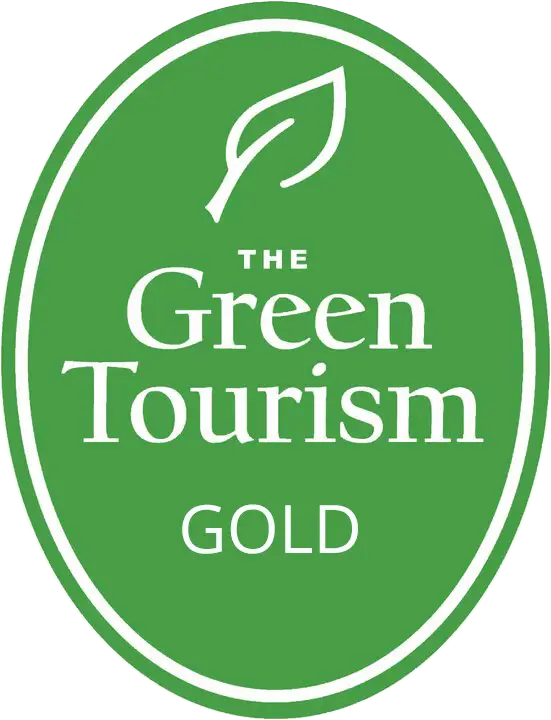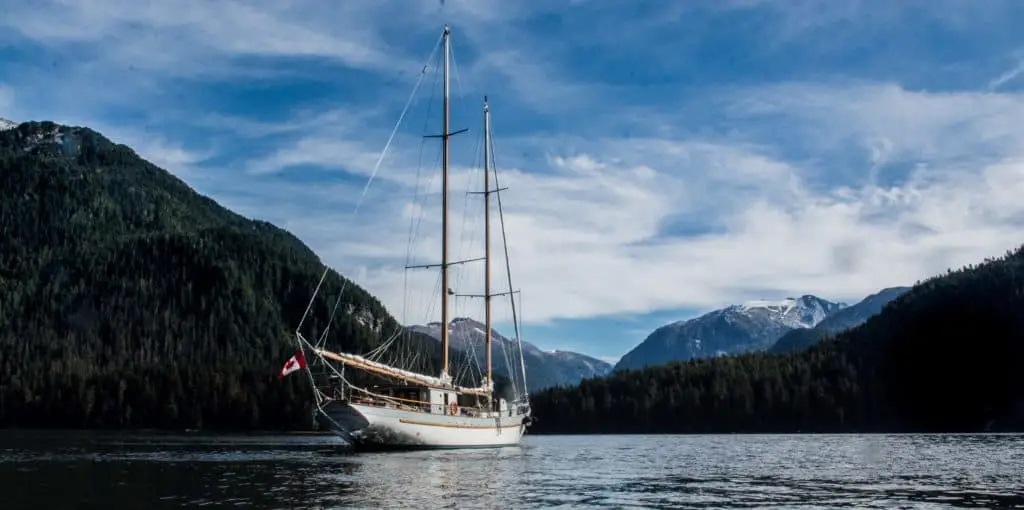
The Great Bear Rainforest
Exploring the Wild in a changing season
One of the greatest phenomena of the Pacific Northwest is taking place in the Great Bear Rainforest. Each salmon waterway system on the British Columbia coast has a specific spawning cycle. Along the Central Coast, first it’s the pink which begin to make their way upstream in late August back to the nursing grounds where their lifecycle began; then it’s the chum and coho following suit up their own home streams; and last but certainly not least, the brilliantly coloured sockeye, and chinook, the largest and most nutrient-rich of all five of the Pacific salmon species found on the coast.
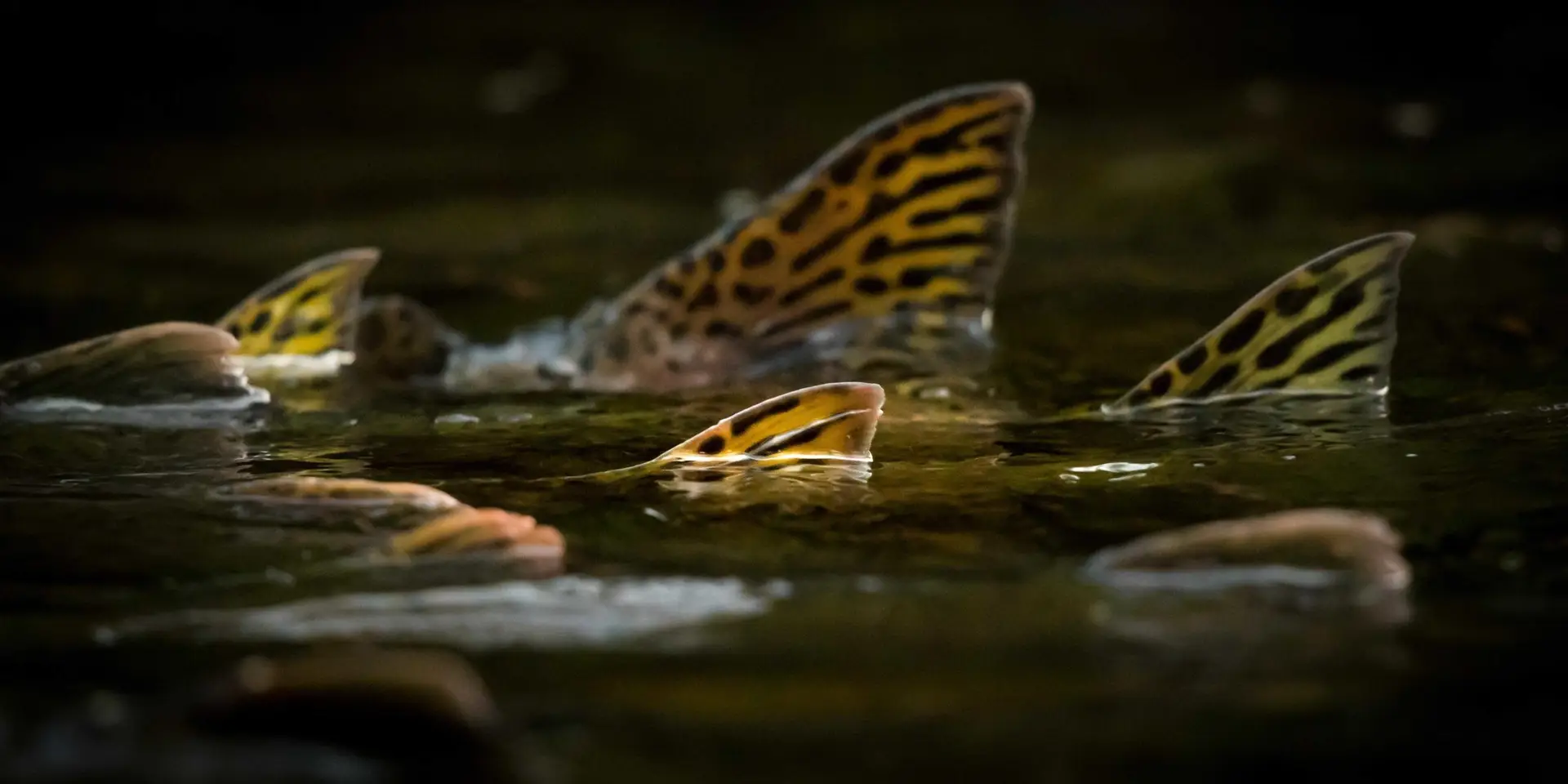
This annual event attracts all kinds of predatory species to the shoreline, adding to the salmon’s insurmountable odds of reaching the headwaters at long last to spawn; each predator with its own preference of fish anatomy. The coastal wolf, a close cousin to the inland interior wolf, lives on the sea (some say with two feet in the ocean and two feet on land) feasting on marine and terrestrial animals, with an adapted favourite, salmon – particularly, their brains – consisting of up to 90% of their diet. You can tell which systems the wolves prefer based on the salmon carcasses lining the streams with missing heads. With fresh prints in the sand to confirm, we know we’re in wolf territory now.
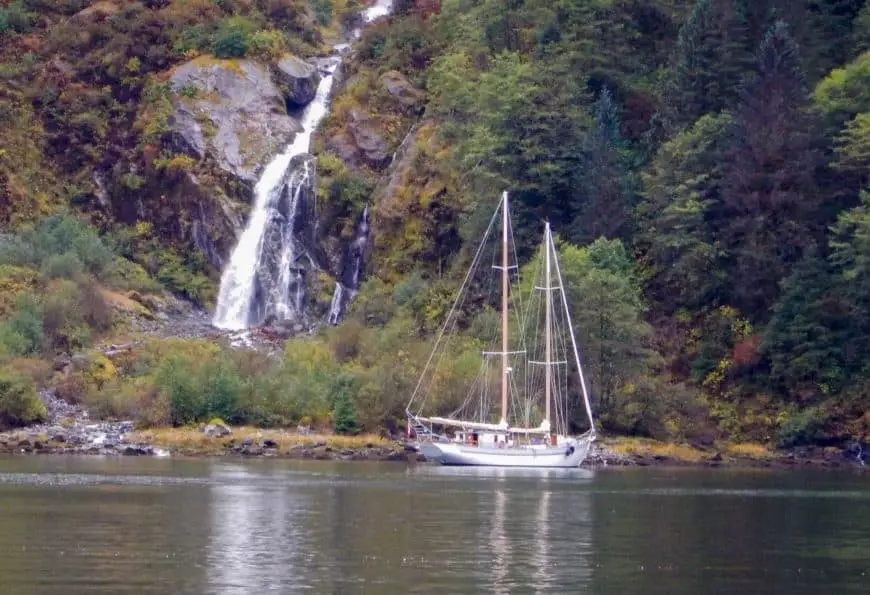
We board the zodiac for dawn patrol, leaving the Passing Cloud at anchor nestled below a 1000-foot waterfall cascading picturesquely behind her. We slip away into a misty morning with fog filling the gaps in the mountainside, creating defining layers in the treetop tapestry.
James Thompson, our onboard photography guide, encourages each of us to have our own dialogue with our environment as we become deeply immersed within it. We may be quite literally all in the same boat, but each of us is having a very different conversation with nature based on our own unique experiences. The results are visible by the individualized perspectives of our photographs.
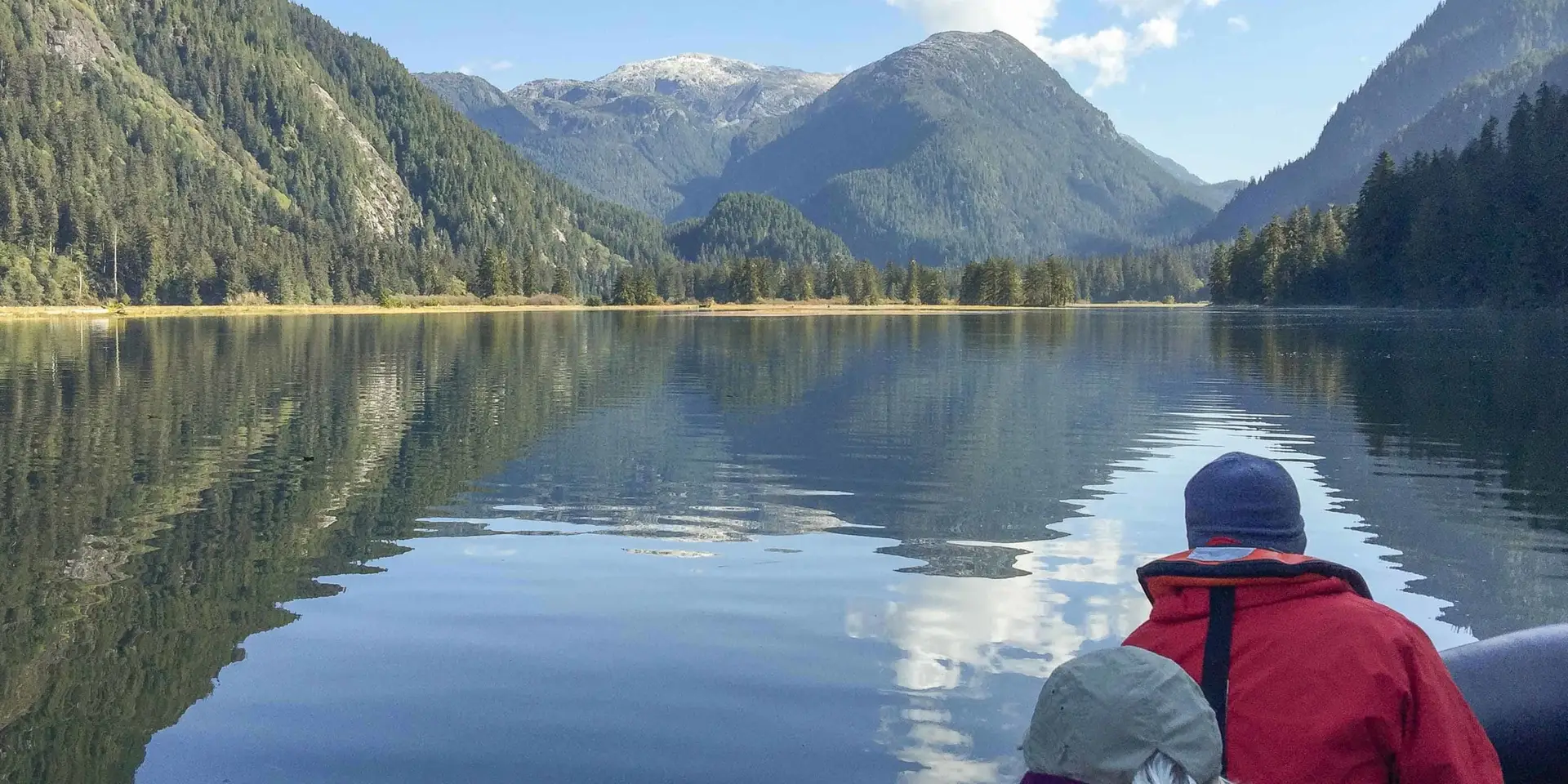
A wild orchard of crabapple trees separates the river and the forest, a sign of past cultivation and an indication of an early First Nations village site. We walk deeper into the forest and find scat, both wolf, and bear. Walking along an animal trail we see a scratching post, or as Russ explains it, the community board. Bears will rub against the tree to leave their scent for other bears passing by, indicating such things as a female with cubs, or a mature male.
The word of the day was patience, as often is with wildlife photography. All of the signs were showing recent activity in the area, we just had to wait. Getting up before the sun breaks often equates to better chances of encountering those crepuscular creatures – namely, bears and wolves. With an impressively full fish buffet at their disposal, it was only a matter of time before they emerge from the depths of the rainforest.
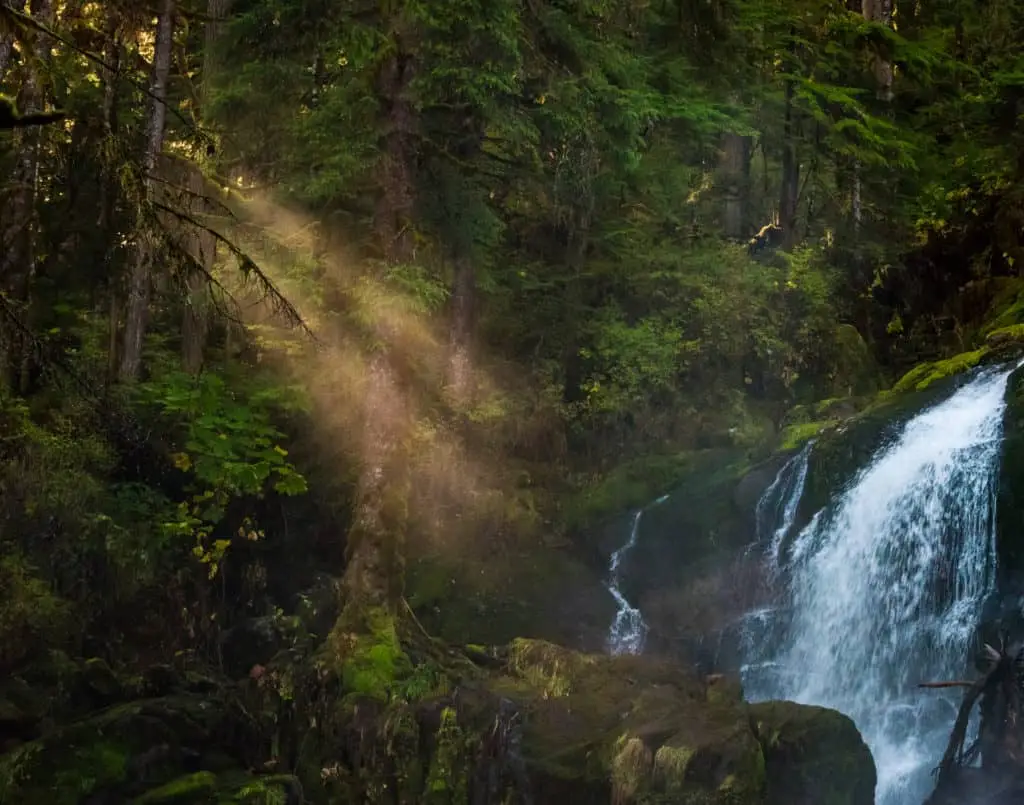
We slowly float upriver, binoculars and cameras always on the ready. Bald eagles fly overhead to feast on the salmon carcasses, while seals haul out on a floating log watching us with curiosity. A lone black bear forages along the mouth of the river, a sure indication there must be grizzlies upstream pushing this young bear’s hunting grounds farther downriver. We post up on the shore across from a probable grizzly fishing site. A fallen tree in the river provides respite for salmon swimming upstream as well as a trap for those less-fortunate fish that will give back to the rainforest in a different way.
Just as we’d hoped, a mother grizzly and two cubs amble down to the river to feed. A brown bear can eat up to 100 pounds of fish every day in preparation for hibernation. It is important for bears to conserve energy and acquire the most amount of food for the least amount of effort. We are careful to keep our distance and remain quiet and still to be sure our presence is relatively unknown, so as not to disturb their much-needed feed. Our disturbance could cause Mother to relocate her cubs to a less-than-fruitful area, delaying or diminishing their daily intake entirely.
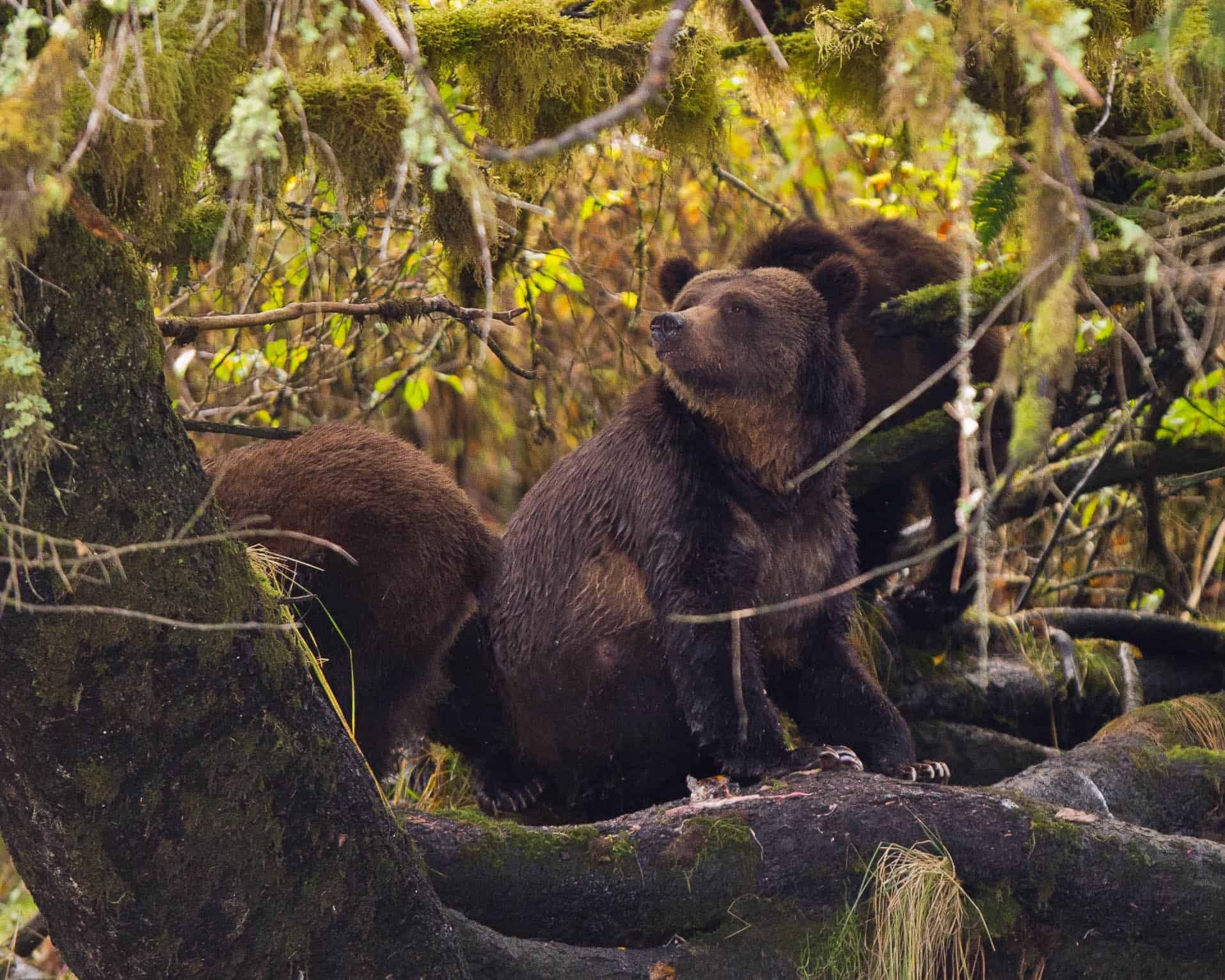
—
“Bears keep me humble. They keep the world in perspective and to understand where I fit in in the spectrum of life. We need to preserve the wilderness and its monarchs for ourselves, and for the dreams of children. We should fight for these things as if our life depended upon it, because it does.” – Wayne Lynch (Bears, Monarchs of the Northern Wilderness, 1993.)
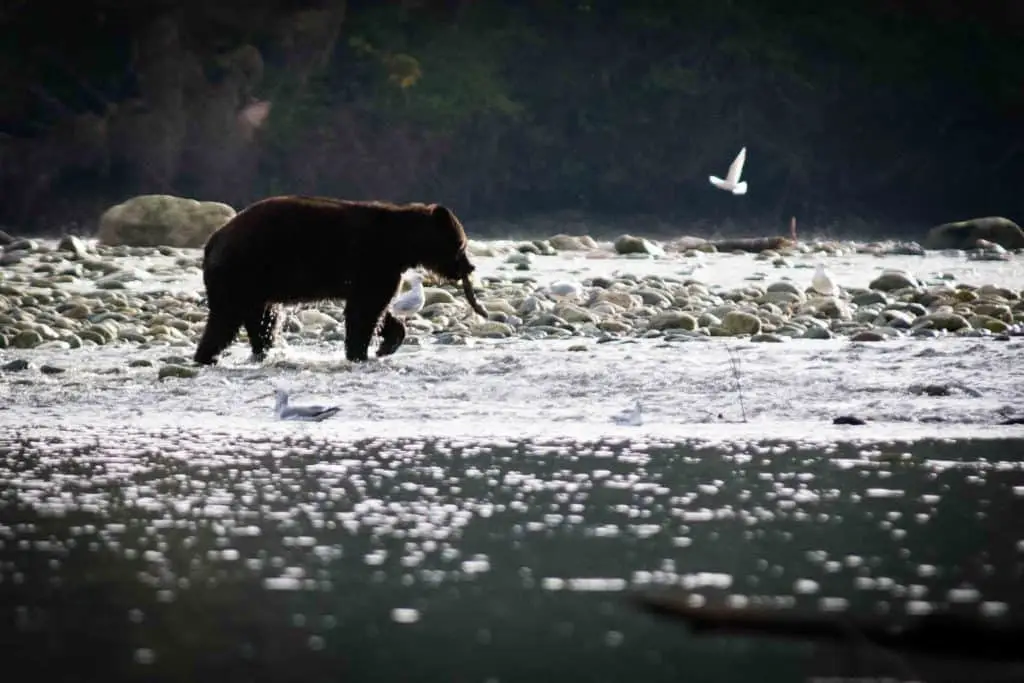
Back aboard the Passing Cloud, we warm our hands, and most importantly our bellies, to refuel our own daily intake and recharge our energy. The food provided by chef Natasha is nothing short of a miracle in the ship’s 5-foot by 5-foot galley. Her attention to detail and careful consideration of nutritional value and presentation is an incredible luxury to enjoy in the remote wilderness.
The moisture in the air from a recent rain creates a brilliant arcing rainbow across the glacier-carved fjord. Glassy calm waters reflect the blue sky above, creating a mirror image lined with cedar, hemlock, yew, and fir trees along the water’s edge. The atypical October weather is a welcoming beacon for a typically rainy time in the aptly named rainforest. Captain Russ pulls down the throttle, slowing the engine – “Whales!”
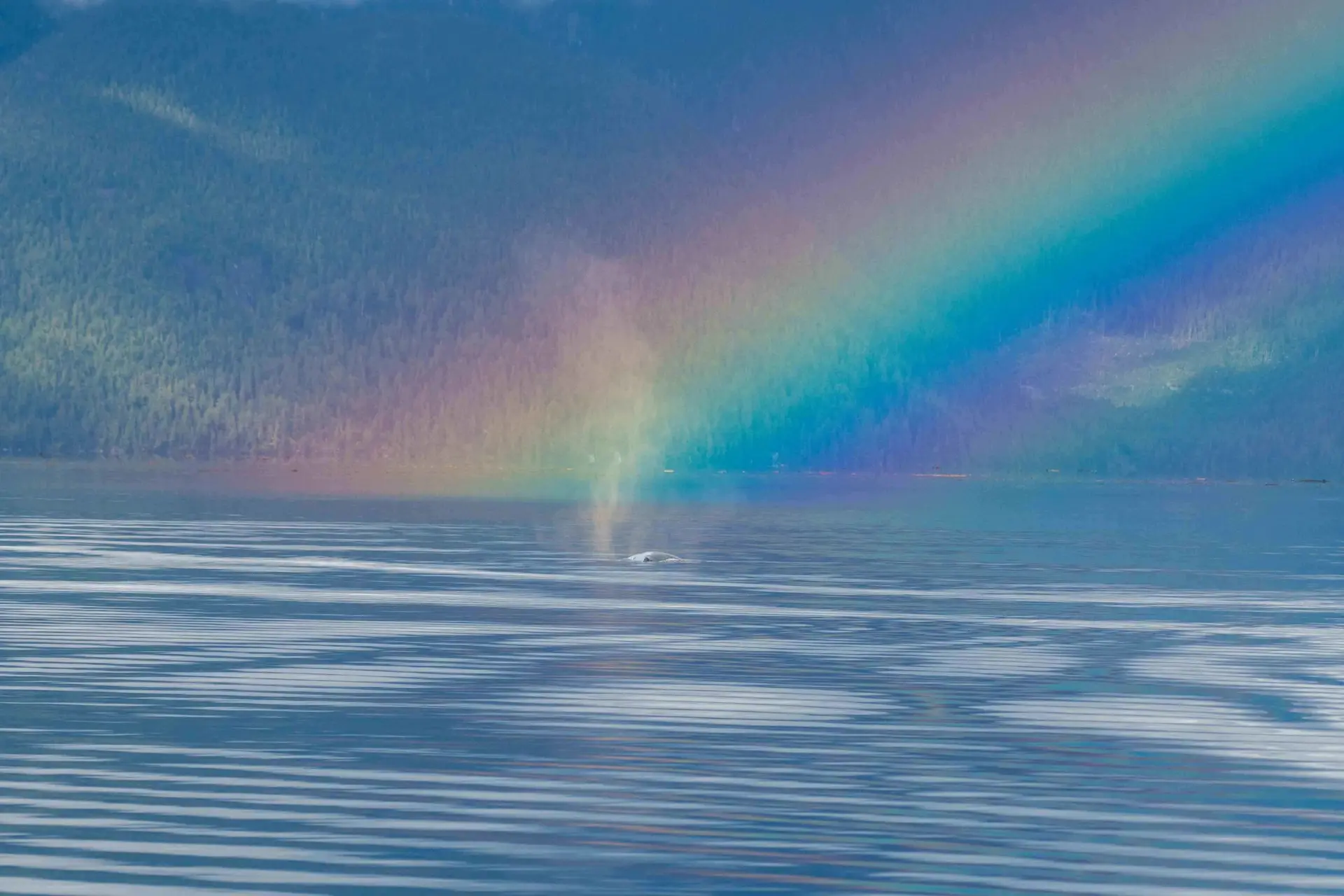
The Great Bear Rainforest is about so much more than just bears; it’s the interconnectedness of the marine and terrestrial life that makes this region so incredibly diverse. Over the past decade, humpback whales have been making a resurgence in the area. Summer and early fall are the best times to view whales in the Great Bear Sea before they migrate the long distance to Hawaiian waters, where they’ll breed and calf their young before returning again in the late spring.
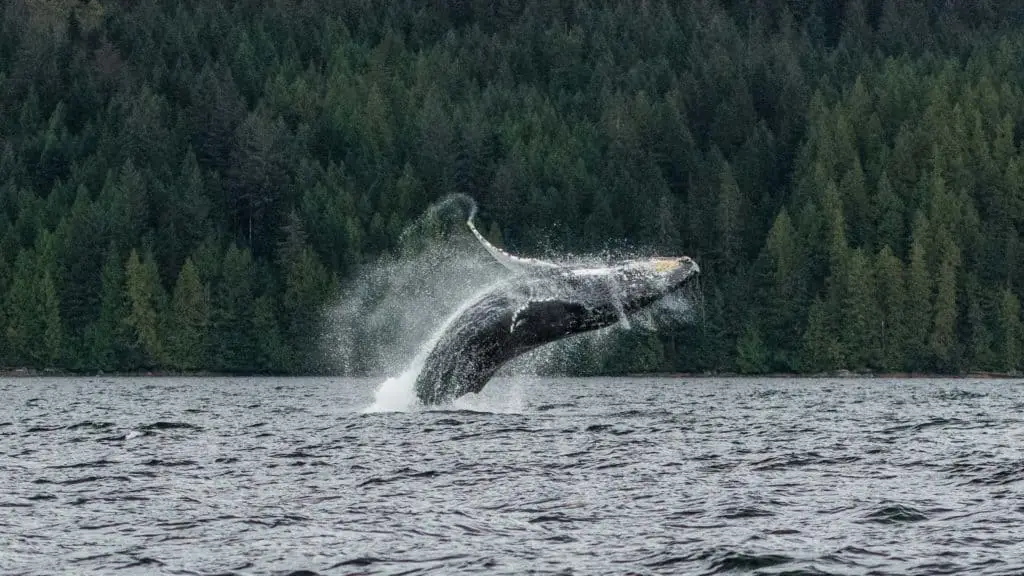
Now deep in the heart of the rainforest, we board the zodiac again for Wildlife Excursion 2.0. We make our way to a known active salmon system and a possible spot for viewing the iconic Kermode, or spirit bear, the rare white-fur variant of the American black bear found only here in the Great Bear Rainforest. This species carries a recessive gene similar to human redheads. Both parents must carry this gene to produce a white bear.
There are only an estimated 50-400 spirit bears on the planet, although these numbers include black bears in the region which may or may not carry the gene and only a couple of dozen living white-fur spirit bears are documented today. This stands testament to why hunting of any bears should be banned; from sight alone, it’s nearly impossible to determine whether or not that black bear is actually a white bear potential parent.
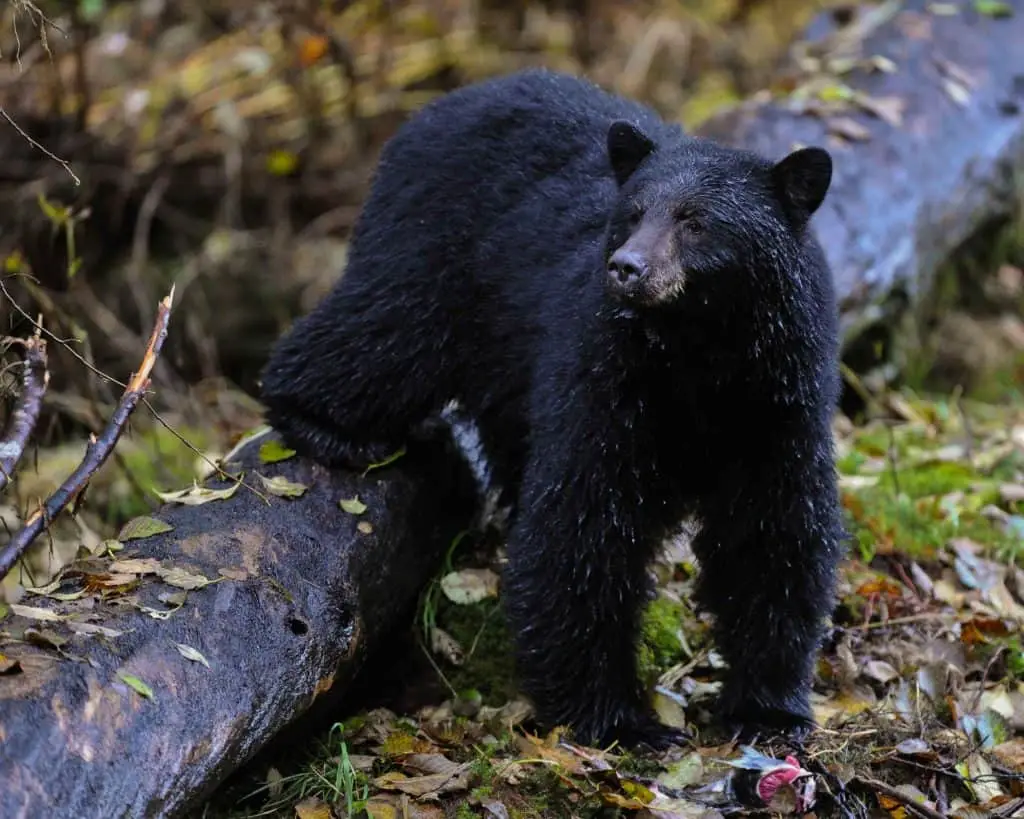
Russ informed us at the beginning of the expedition that the symbol for bears when spotted was to put two fists on top of your head to resemble ears, so as not to alert them by shouting, “bear!” We walk delicately down the muddy forest path draped in freshly fallen leaves. Russ turns around and gives us the much-anticipated symbol. My heart starts beating a little faster. We continue down the trail, slowly and silently. With eyes wide open, I’m holding my breath. We reach the riverbank and Russ points across the slow-moving stream. To my surprise and incredible excitement, it’s a white bear!
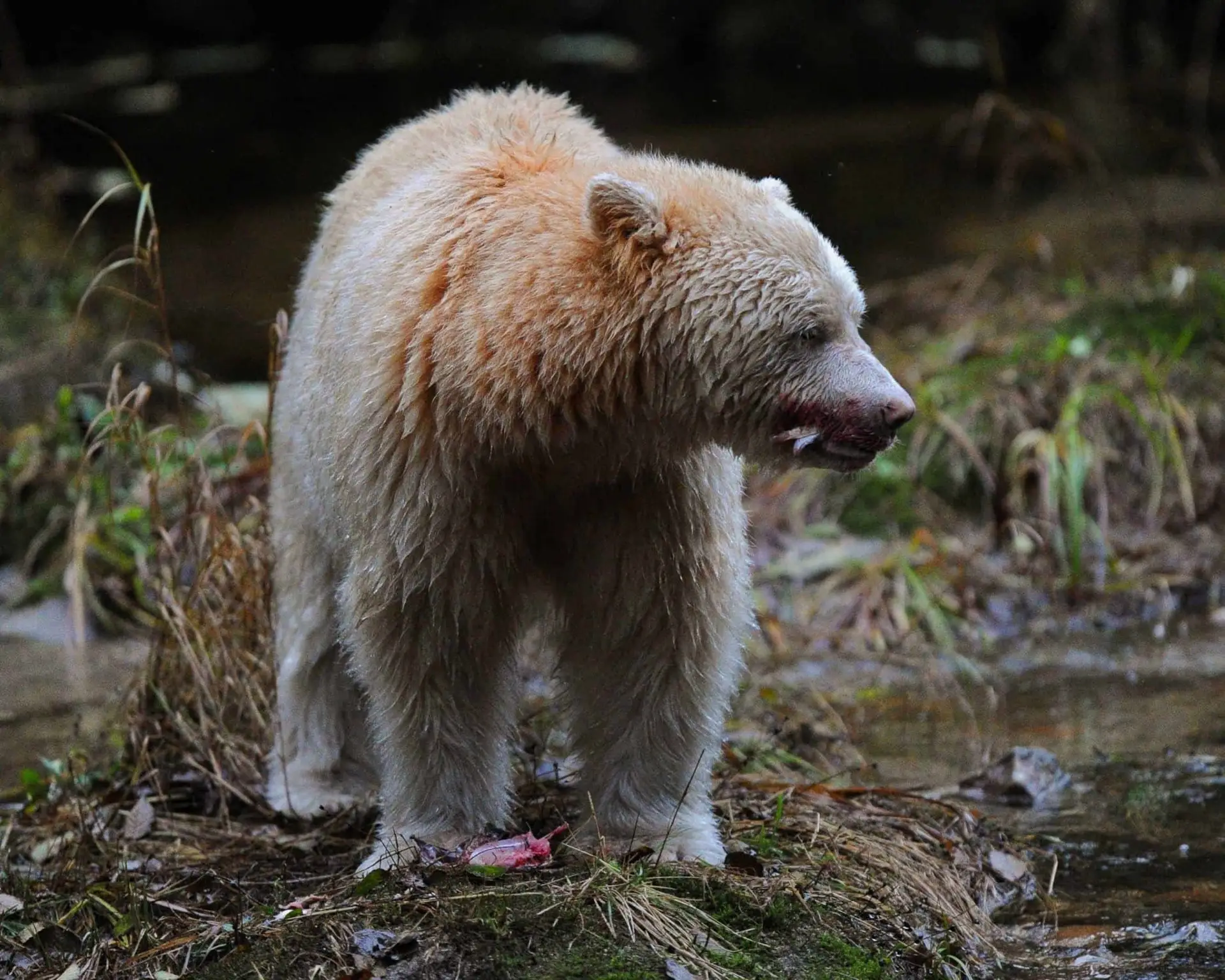
A large male spirit bear – now known as ‘Boss’ – sits across the river devouring a freshly caught salmon, mouth bloodied and bones crunching. The early morning light highlights the contrast between spirit bear and mossy ground. The white fur is tinged with a hue of pinkish-orange, perhaps from the salmon-rich diet.
We sit in silence and just watch, and photograph, and take in this incredible and rare encounter. When photographing wildlife it is important to understand wildlife behaviour to have the ability to notice when that behaviour changes. Are they feeling agitated by our presence? Is their feeding pattern being disrupted? What impact am I having on this bear?
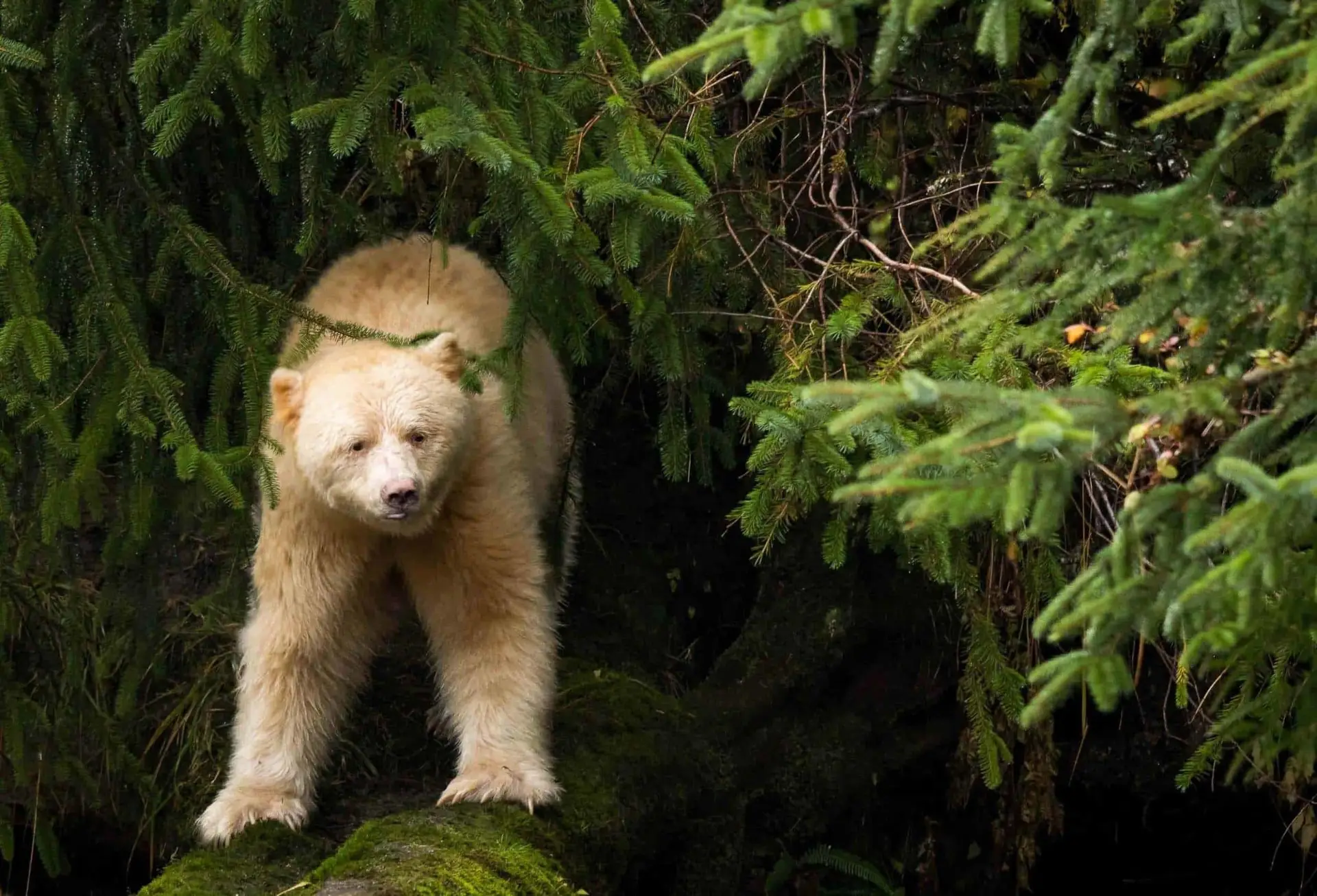
There are many encounters of human-wildlife conflicts on the edge of urban areas. In 2017 alone, British Columbia conservation officers reported 20,000 incidents ranging from sightings to attacks, largely due to human negligence such as leaving garbage out and thus habituating bears beyond urban boundaries.
The remote wilderness of the Great Bear Rainforest is far from any urban areas, although we must be that much more aware of our impact on this environment and its inhabitants. Respecting our distance from wildlife is crucial to ensuring the animal’s prolonged safety in their natural habitat. If we encroach too closely on their territory, allowing them to become increasingly more ‘comfortable’ with us, these animals can become conditioned to our presence. As history would prove, this only ends up resulting in bad news for the bears.
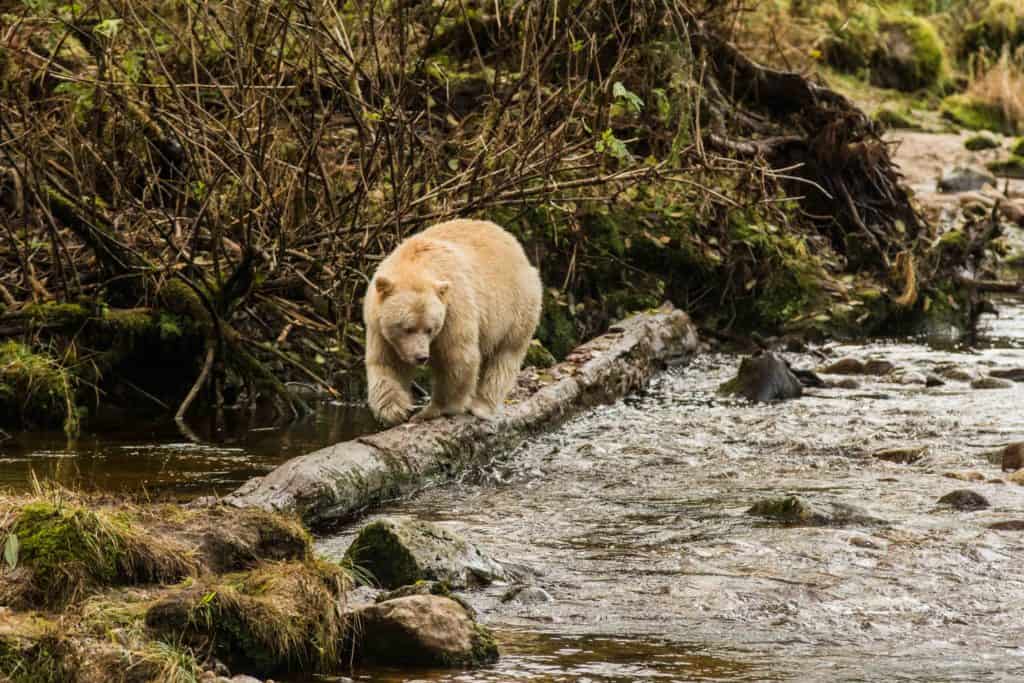
We are cognizant of our presence and our own behaviour and know that as foreigners in this land we must not overstay our welcome, to ensure the least impact on the bear’s space as possible. Everything we do has an influence on our environment and it is up to us to minimize that impact. We slip away just as silently as we came, to return to our home on the water. The silence remains when we get back to the Passing Cloud as everyone continues to have their own internal conversation with this extraordinary experience – one that I’m sure won’t be leaving the memory banks anytime soon.
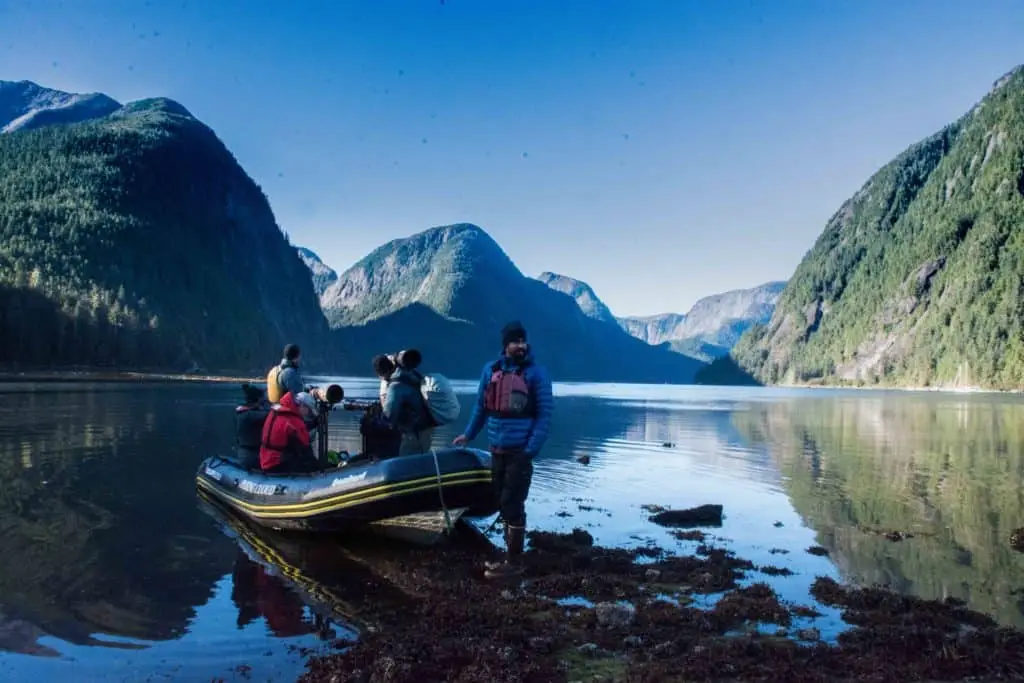
We set anchor in another secluded inlet and go ashore to further explore this wild place. Some of the more defining features of the Great Bear Rainforest are the dramatic peaks that line the narrow fjords. The temperatures are dropping and a dusting of white caps the mountains in the distance, reminding us that another change of seasons is upon us.
We cross the estuary where grasses and sedges are turning colour, to match the very few deciduous trees speckling flecks of fall hues in the predominantly evergreen rainforest. With every step, we see signs of grizzly bears: large impressions in the grass; ‘day beds’ under the crabapple trees; and fresh digs, a telltale sign of grizzly presence. Grizzlies dig for rice root, a necessary carbohydrate for bears to maintain a balanced diet before hibernation.
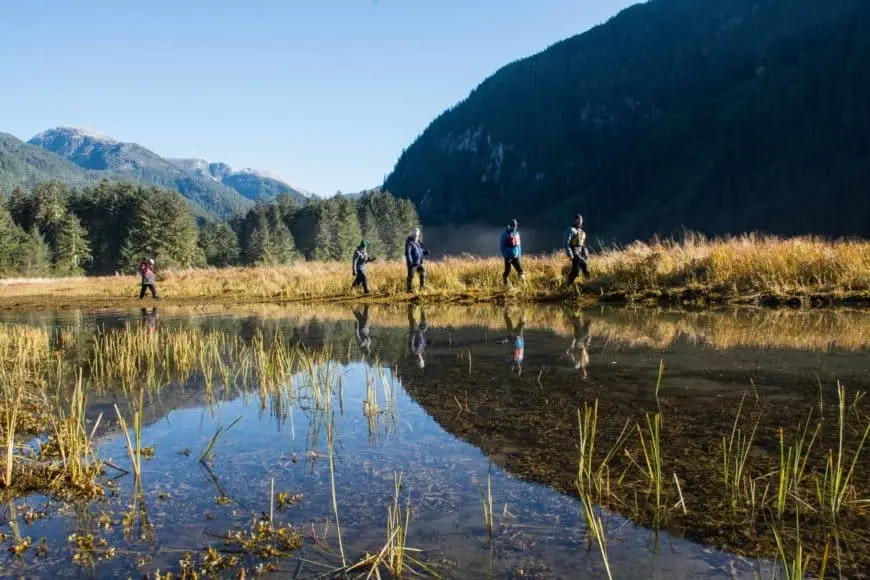
This morning showed the first signs of winter approaching with frost covering the silverweed and shoreline plants – and much to our delight subduing the decaying salmon smell. With our boots crunching on the frozen leaves, we step quietly so as not to alert our hopeful subjects. I find myself often holding my breath. Perhaps to remain as silent as possible, or maybe its just the spectacular beauty of this place that encourages me to stop, freeze, and take it all in.
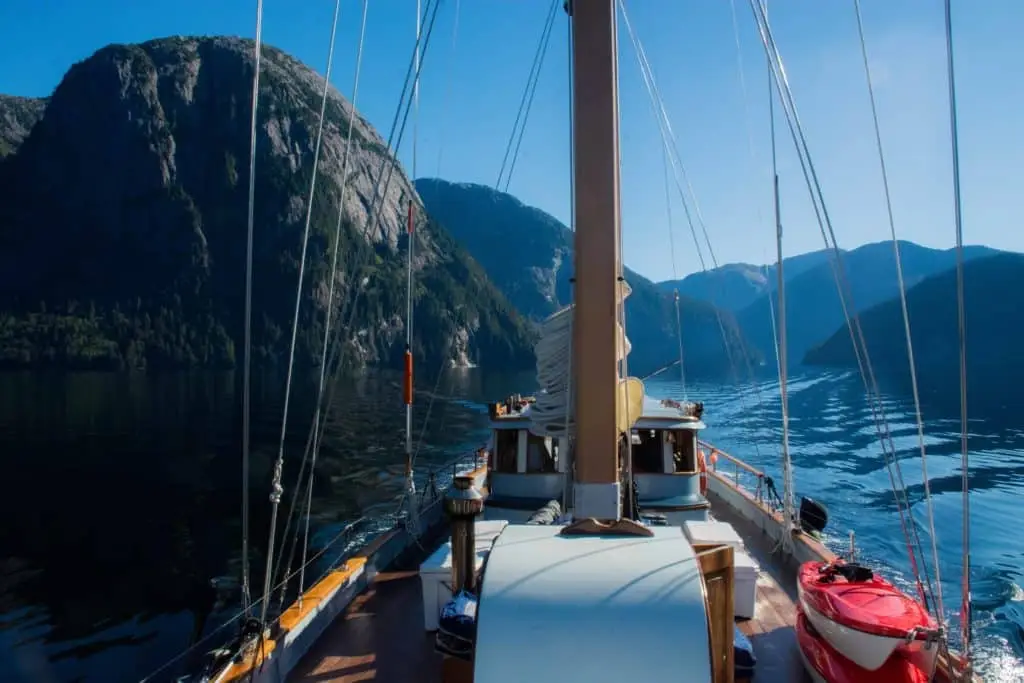
For our final leg of the expedition, we exit Fjordland and head west to the outer islands of the Great Bear Rainforest in search of wind and other marine life, particularly sea otters in a region known for rafts of over 100 animals. This was one of the few areas along the BC coast that was repopulated after the extirpation of sea otters during the fur trade in the 1800’s. After the reintroduction of 89 Alaskan sea otters in the late 1970’s, the furry mammals found homes on the west coast of Vancouver Island and certain areas of the central coast.
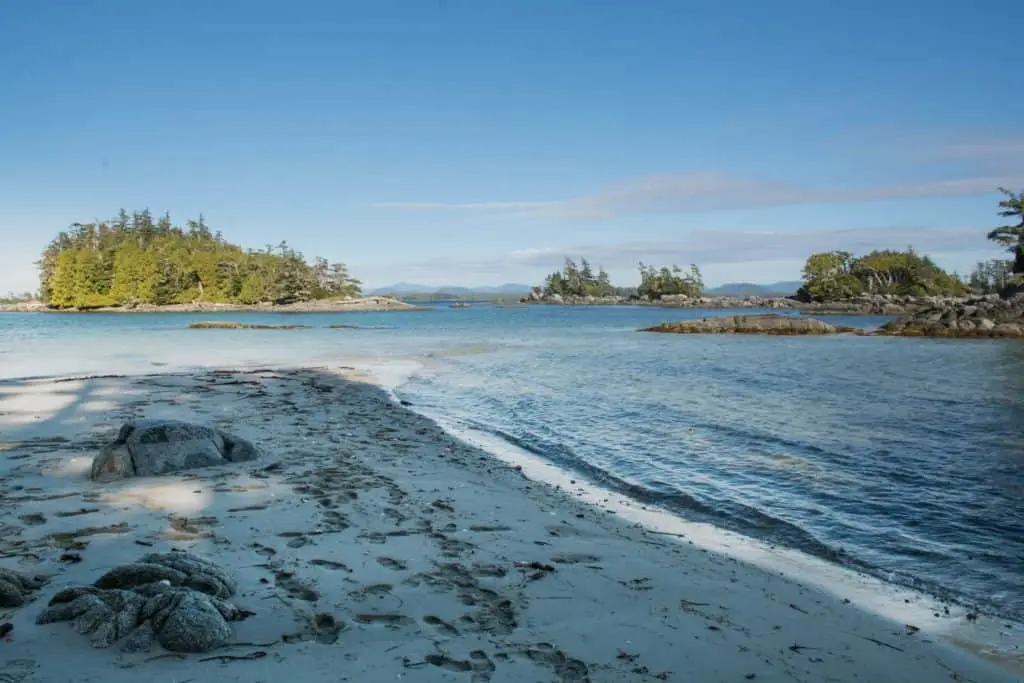
We go ashore to a stunningly tropical scene of white sand beaches and turquoise waters. The only things missing were palm trees and warm weather and we could have been in the Caribbean. Sure enough, a couple of the fluffy creatures make an appearance as they collect sea urchins and shellfish to sustain their rapacious appetite.
As we near the end of our 9-day expedition, with hearts, heads, and memory cards full, we reflect on this time spent in the remote wilderness of B.C. We’re reminded again of why this area is known for megafauna and diversity, and we leave with a better understanding of this place and our impact on it. We’ll all go home, back to our busy lives and share our memories and photographs with friends and family. But what happens next? We have fallen in love with this place, but how do we translate that to those who have never been? How do we ensure this place remains protected and wild? Will our photographs be enough to make others fall in love with this place and want to protect it too? We’ll certainly try!
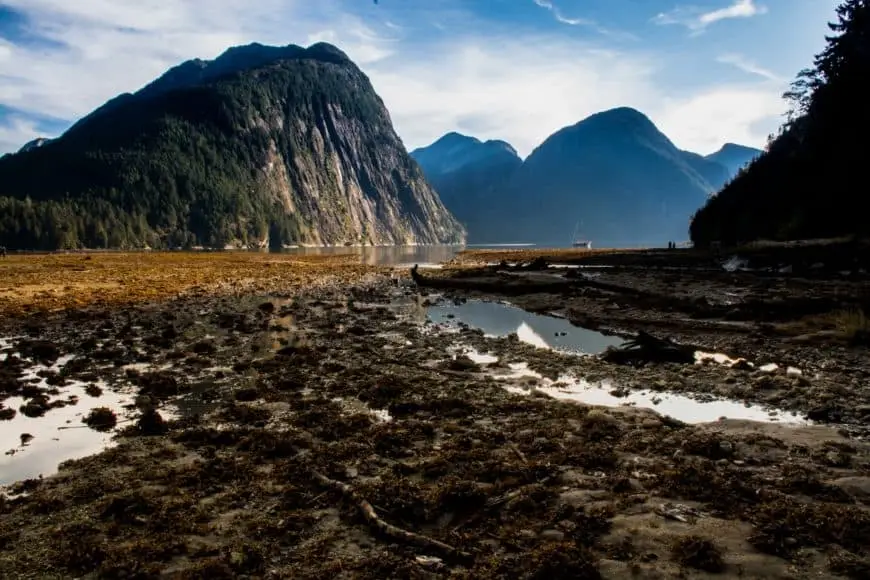
Photography by: Guest Services and Marketing Coordinator, Oriana Smy; Onboard Photography Expert, James Thompson; and Guests, Randall Trent and Robert Kerr

